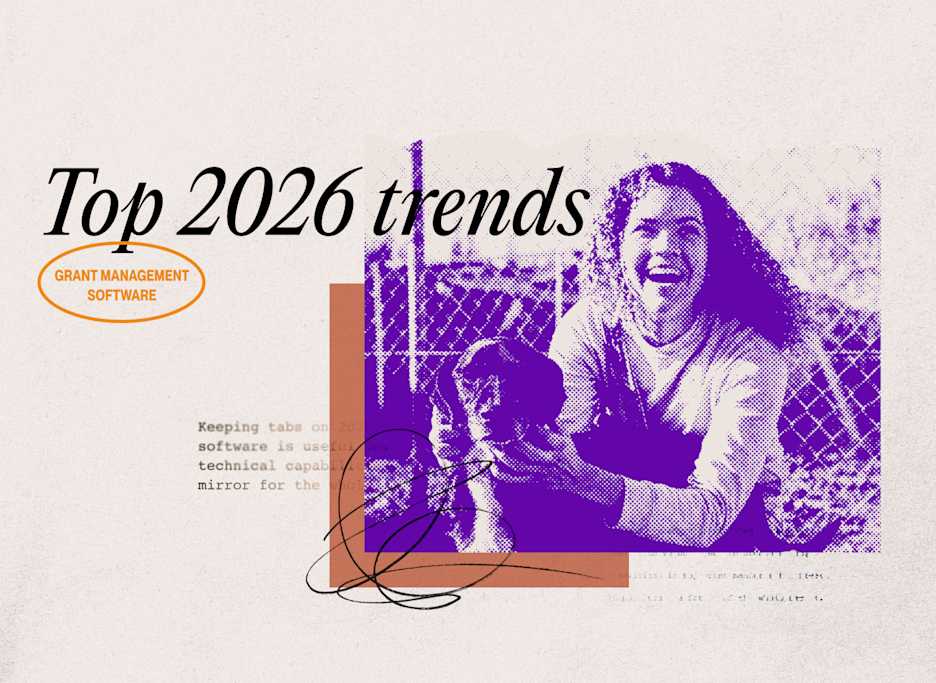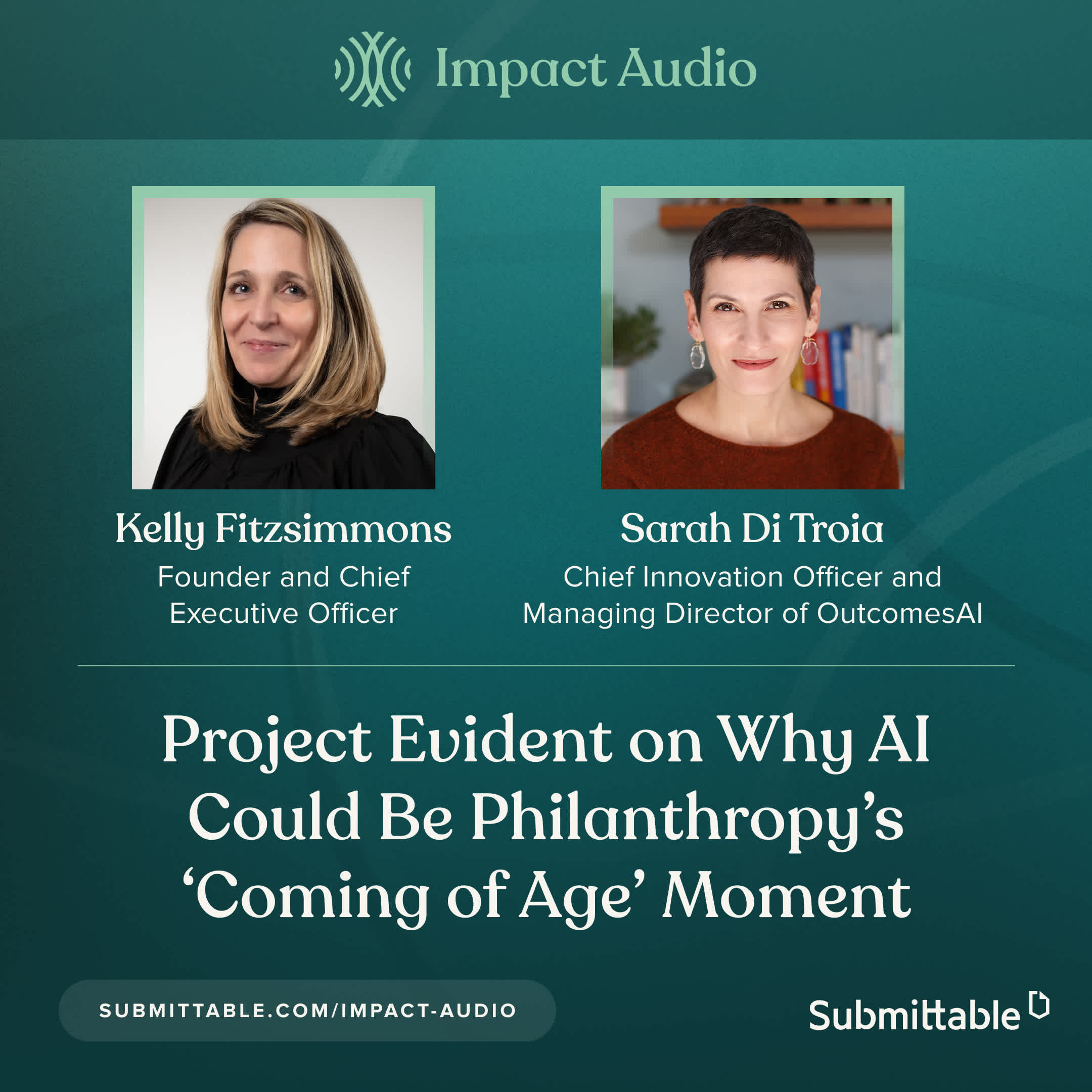Grant Management
Make Space to Think Big: How Grantmakers Can Empower Bold Ideas
Innovation in grantmaking unlocks the big ideas needed to create real change. Learn how funders can help create more breakthroughs.
Learn what the latest developments in grant management software mean for the whole grantmaking sector.
Last Updated October 31, 2025
Trends in grant management software (GMS) serve as a mirror for the whole grantmaking landscape. That’s because the best tech vendors seek to create strong feedback loops with the communities they serve, so innovations in top grant management software reflect grantmakers’ current priorities and give a glimpse into the future of the whole sector.
Right now, the top trends in grant management software show the incredible pressure grant managers are under to move efficiently without sacrificing the security or the relationships necessary to do this work well.
Acquisitions and mergers in the grant management software space show that tech vendors are working to build end-to-end solutions that meet all of the users’ needs. Recent news includes Submittable joining forces with WizeHive, Euna Solutions acquiring Amplifund, and the merging of SmartSimple and Foundant.
This kind of change in the marketplace reflects grantmaking teams’ eagerness to consolidate their tech stack. Having one software that can carry them through every step of their grant program is part of that effort. Grant managers understand the downsides of cobbling tools together—communication gaps, bigger learning curves, and potentially higher costs.
As grant managers deal with smaller budgets and less dedicated IT staff, they crave an easy-to-use platform that truly covers the full grant lifecycle with built-in tools for funds tracking and disbursement, fraud prevention, and impact reporting.
These teams can’t afford to spend money and time on a GMS only to realize they have to go shopping for another tool to finish the job. And they are good at separating software that claims to be full-lifecycle from grant management software that actually is.
As grant management software becomes more full-lifecycle, grantmakers can think about these technology companies as true partners. The right GMS team can provide the holistic support and deep expertise grantmakers need.
GMS tech vendors are investing in artificial intelligence and automations with a deep awareness that these features must support the relationships and security that make grant programs possible.
With many nonprofit and foundation budgets tightening as government funding ebbs, teams are getting smaller. Automations in grant management software can help small grantmaking teams do more without getting buried in administrative work.
For example, Submittable has automations that cross-check and verify data with third-party databases such as IRS tax information, which saves grant managers from having to manually check data. A smart summary can provide an overview of applications so program managers can quickly get a high-level understanding of their applicants before moving forward. AI translators can help teams build more accessible applications quickly.
Sarah di Troia, managing director of OutcomesAI at Project Evident, sees this moment as a big opportunity for the nonprofit sector. While the for-profit sector often has many technological tools at their disposal, the nonprofit sector hasn’t had the same access.
She describes what that has been like in the past:
“I think about it like you open up the cutlery door and you have like you have all these different pieces of silverware you can use to try and help that organization grow. And on the nonprofit side, we have like a rusty butter knife, it's like we've got a grant that's what we've got for you.”
Sarah sees AI playing a big role to help close the gap between nonprofit and for-profit organizations. The key is in building AI tools responsibly, with feedback from the communities impacted.
“The only way we're going to get to adoption is if many people have their fingerprints on it and feel like they were able to contribute and kick the tires and it's relevant to the questions that they face inside of their organization, be that a funder or as a practitioner,” she says.
It’s clear that GMS companies are listening to industry experts as they build automations. The focus on ethical and responsible AI adoption from organizations like the Technology Association of Grantmakers and NTEN shows just how invested grantmakers are in getting this right. Grant management software must be built around clear, strong AI principles.
As grant management software development teams build new features and functionality, a big focus is on how they can help grantmakers stay ahead of compliance and reporting requirements. Many of the latest product updates aim to strengthen security and transparency.
This trend reflects grantmakers’ experience as federal requirements shift quickly. With a long list of executive orders having an outsized impact on nonprofits, grantmakers know they need software that keeps them ahead of the curve. Many government grantmakers are taking an approach that looks like “over-compliance.” Nonprofits and foundations can take a cue from their public sector counterparts. In compliance and reporting, it’s incredibly difficult to backtrack.
Technology vendors continue to build infrastructure for effective data collection, fraud prevention, and reporting. Grantmakers know they cannot afford to play catch up in this realm, and software is key to staying resilient.
As funders look to support the most impactful nonprofits, technology is a big part of the equation. Having a strong GMS partner signals to funders that you’re a forward-thinking organization worthy of support.
Research shows that the tech gap between digitally-savvy nonprofits and less technically sophisticated ones is also creating a gap in funding. Grantmakers don’t want to find themselves on the wrong side of this equation. It’s a bigger risk now than ever to use grant management software that isn’t actively innovating.
As funding sources shift and more billionaire megadonors step into philanthropy, nonprofits need to appeal to a new generation of givers. David Callahan, founder and editor-in-chief of Inside Philanthropy, anticipates a reorganization of the whole philanthropic sector. Megadonors, such as Mackenzie Scott, are shifting away from the traditional foundation model.
“I really think that the modern billionaire donor class has moved away from that model in significant ways, and I often see the Gates Foundation as sort of the last gasp of the old model.”
A look at the world’s richest people shows that this is a group that values technology. Nonprofits looking to appeal to this new class of megadonors must have a clear and coherent story about how they use technology and AI in their work. The right grant management software gives you a clear point of view to tailor to your organization.
GMS vendors see their role as being more than a tool. They’re building a framework that can shape priorities and set the course for program and organizational success or failure. More and more grantmakers are beginning to understand the power of choosing the right grant management software.
As you sort through software options, think about what will serve your team well today, but also consider which partners can help you grow into the future. If you’re looking for grant management software that can help you meet your goals, get in touch. We’re here to help.

Laura Steele is a content producer at Submittable focused on the world of grantmaking and corporate giving. Her work often explores the connection between technology, equity, and social good.
Grant Management
Innovation in grantmaking unlocks the big ideas needed to create real change. Learn how funders can help create more breakthroughs.
Grant Management
If practicing trust-based philanthropy is important to you, this checklist can help you find the right grant management software.
Grant Management
To track the impact of unrestricted funding, grantmakers need to take an ecosystem-level approach. Here’s how to do it right.

